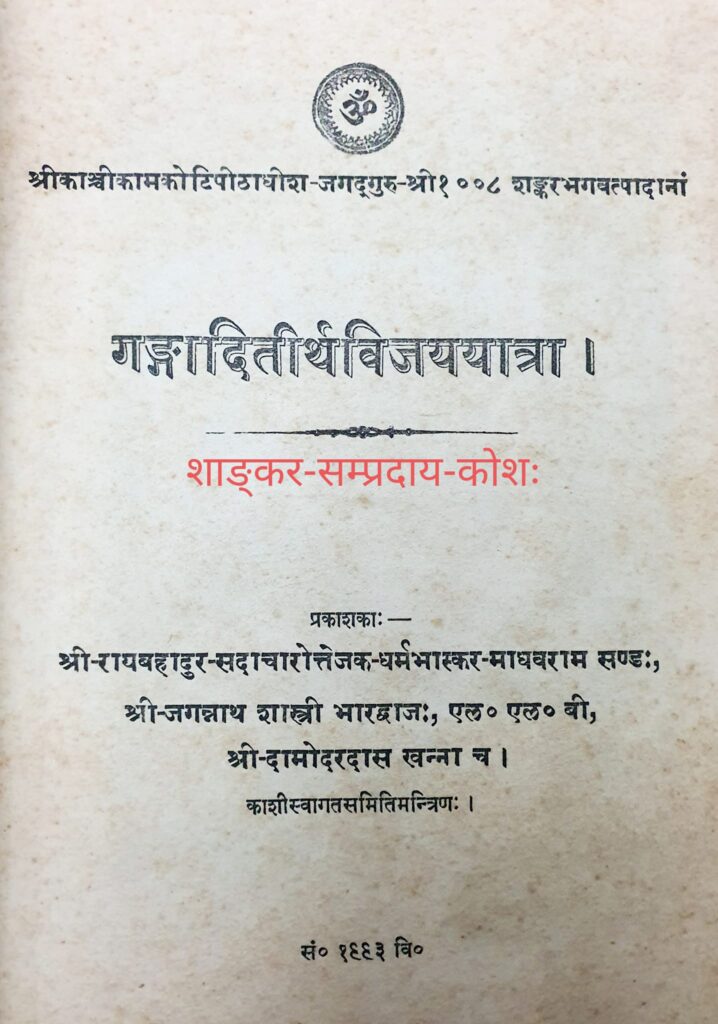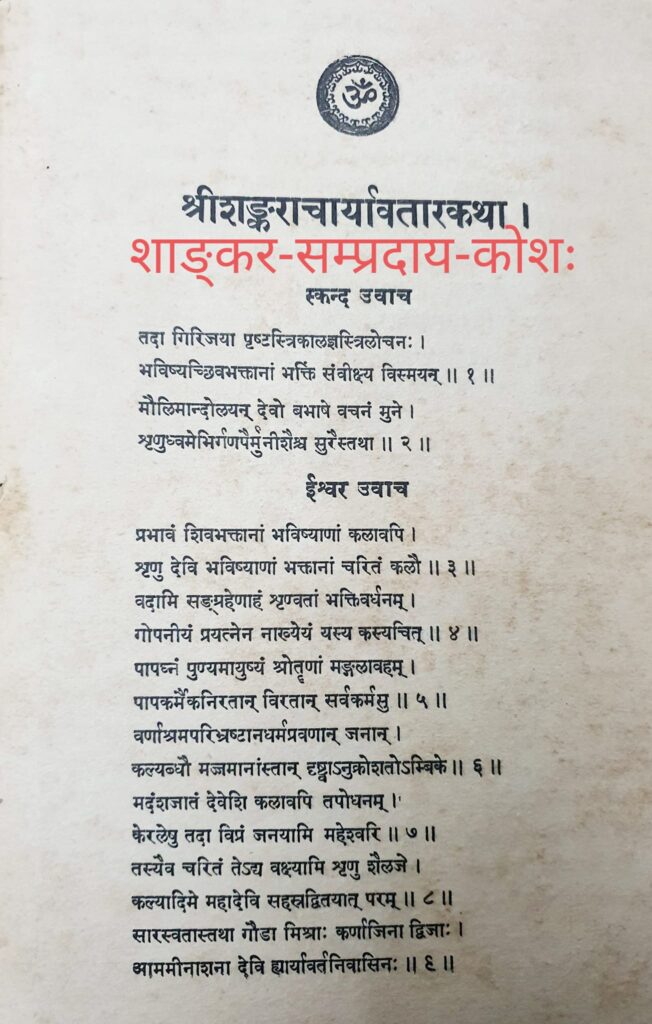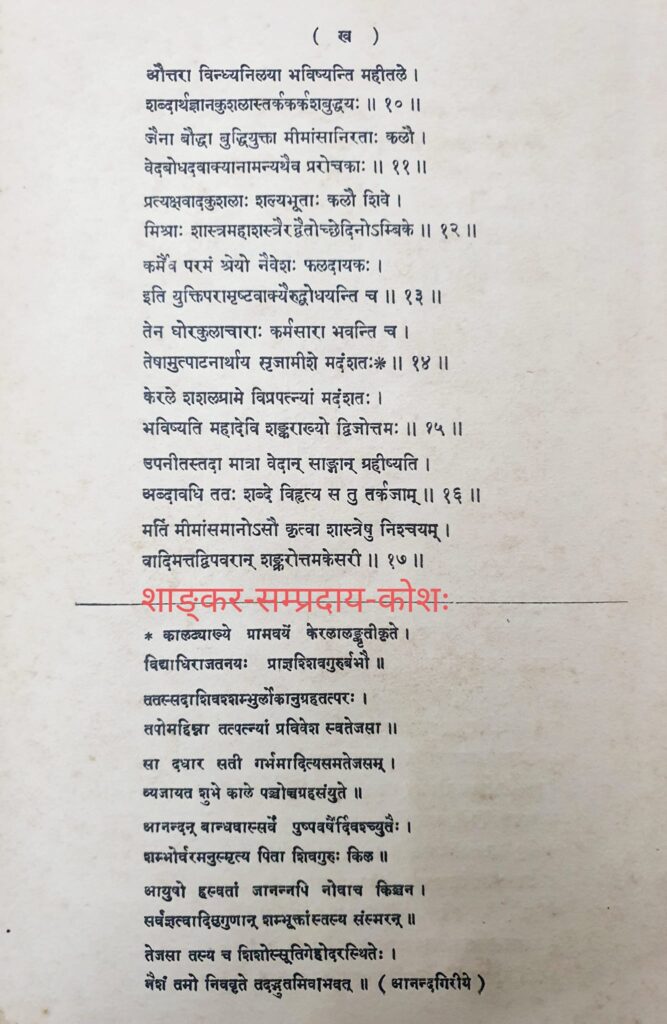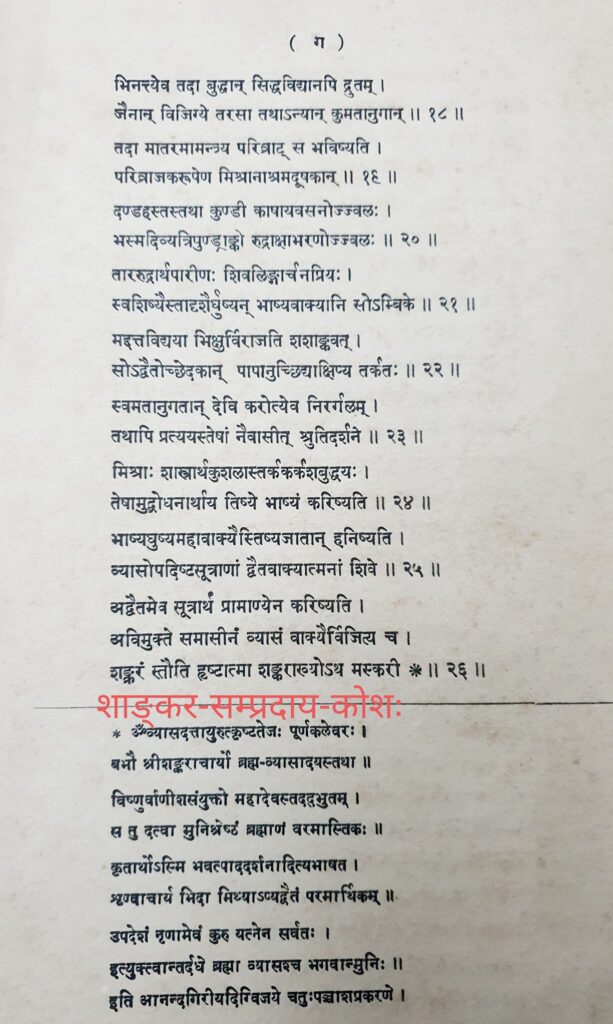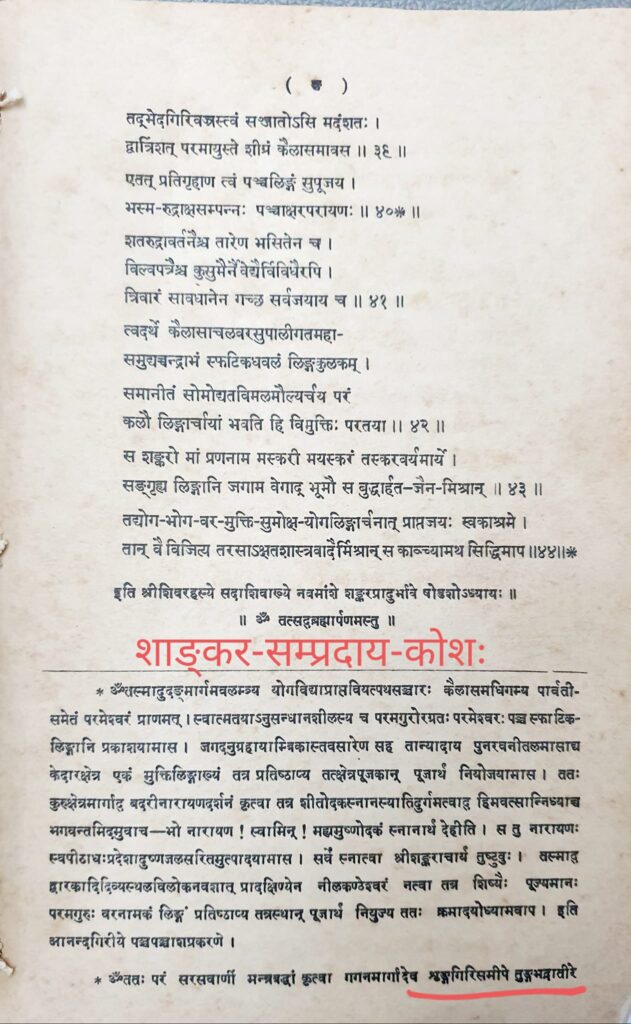Shivarahasyam also acquires great significance in the Gangadi Vijaya Yatra of 1934 of Shri Chandrashekharendra Saraswati Shankaracharya Swamigal, the 68th Acharya of Shri Kanchi Kamakoti Mulamnaya SarvajnaPitham.
When some scholars questioned the validity of the Kanchi Kamakoti Pitham, Shivarahasyam was considered as evidence and one of the important pramana granthas for the charitam of Shri Shankara Bhagavatpada.
The sixteenth adhyaya of the ninth amsha of this Shivarahasyam narrates the history of Shivabhaktas beginning with that of Shri Shankara Bhagavatpada. This text says that He incarnated 2000 years after the beginning of Kaliyuga.
Many granthas accept the pramanya of Shivarahasyam. Shivarahasyam is also quoted in nibandhanagranthas such as nirnayasindhu and the Advaitarajyalakshmi commentary of Madhaviya Shankara Vijayam.
Sadananda who wrote the Shankara Digvijaya Saram, a summary of Madhaviya Shankara Vijayam refers to both Shivarahasyam and Anandagiriyam and that he writes his text after examining them.
शैवे सूचितमादितो यतिवरैर्बद्धे पुरा ग्रन्थतो
ऽगाधे शङ्करदिग्जये निजधिया वीक्ष्याहमेवाततम् ।
सिद्धान्तं श्रुतिसद्गिरां किल ततो निष्कृष्य संक्षेपतः
कुर्वे स्वात्मविशुद्धये स्फुटममुं तत्सारमेवादरात् ॥
During the Gangadi Vijaya Yatra a large body of scholars and Panditas of Kashi gathered, headed by Tarkaratna Panchanana Bhattacharya, and weighed and examined all the pramanas. The body of scholars wholeheartedly accepted the validity of the Mulamnaya Sarvajna Pitha and its sthapana by Shri Bhagavatpada after carefully weighing all the textual evidence.
In the Shivarahasya, Shiva gives the five lingas to Shri Shankara Bhagavatpada and asks Him to take these lingas and worship them thrice a day. To this day, the Jagadgurus of the Kanchi Kamakoti Mulamnaya Sarvajna Pitham offer puja to Shri Chandramaulishvara three times a day.
The Shivarahasyam concludes that by worshipping these five lingas named Yoga, Bhoga, Vara, Siddhi ( Moksha) and Mukti in His digvijaya, Shri Bhagavatpada defeated scholars and then ascended the Sarvajna Peetham in Kanchipuram in the sannidhi of Shri Kamakshi Devi.
तद्योगभोगवरसिद्धिविमुक्तिनाम-लिङ्गार्चनाधिगत-दिग्विजयः प्रकामम्।
सर्वज्ञपीठमधिरुह्य विजित्य मिश्रान् काञ्च्यां शिवे तव पुरः स च सिद्धिमाप॥ ४६ ॥
In a publication from Shri Vallabharama Shaligrama Sanga Vedavidyalaya titled “Adishankara Pujakalpa” the preface by Purushottamashrama Swami in 1992 says that an old copy of Shivarahasyam was available in Kashi Naresha Pustakalaya and copy was with Panditaraja Rajeshvara Shastri Dravid. The tippani of this also contains extracts from Anandagiriya Shankara Vijaya from Shri Rama Taraka Matha Pustakalaya, thus establishing the pramanya and importance of these two granthas for both the Shankaracharitam and for Shri Kanchi Kamakoti Mulamnaya Sarvajna Pitham.
According to the Royal Modi records of the Tanjore Mahratta kingdom, it is documented that Maharaja Serfoji obtained a copy of the Shivarahasyam manuscript from Varanasi. This itihasa which is a valuable piece of ancient literature is also safeguarded in numerous libraries across Bharat.
During the later part of the 19th century, some books were published with the altered version of the shodasodhyaya, navamamsha of Shivarahasyam. However, the learned Pandits of Varanasi through their expertise, identified and removed those spurious alterations made in the original text of Shivarahasyam.
They successfully foiled the attempts made by the four math propagandists to diminish the eminence of Kanchi pitham and alter the sacred samadhi sthala of the Acharya in Kanchipuram, by comparing the modern publications with the original Shivarahasyam manuscripts preserved in Varanasi.
(3/3)
[Images: Shivarahasyam, 9th Amsha, 16th Chapter – Gangadi Tirtha Vijaya Yatra of Shri Kanchi Kamakoti Peetadhipati Jagadguru 1008 Shri Shankaracharya Swami, Published by Shri Madavram Sanda, Shri Jagannatha Shastri Bharadwaj and Shri Damodardas Khanna, Varanasi (1936). ]
